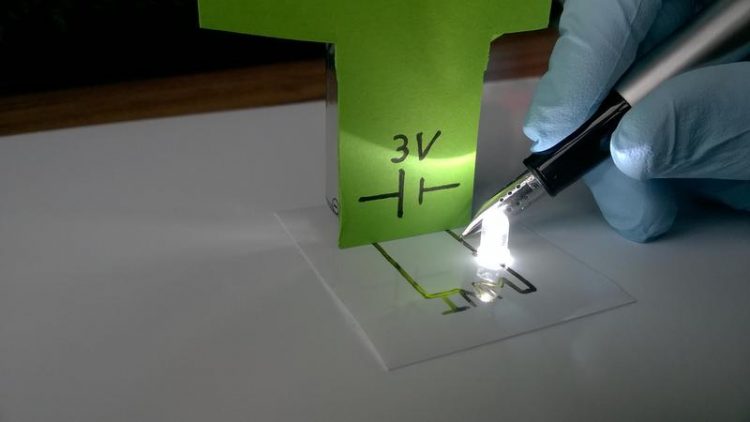HMI 2019: Conductive metal-polymer inks for inkjet printing: flexible electronics without sintering

Flexible electronics without sintering Free within this context; source: INM
The developers will demonstrate their hybrid inks at stand C54 in hall 5 at this year's Hannover Messe, which takes place from April 1 to 5.
Conductive inks are widely used in to print electronics. The inks presented by INM are applicable to flexible photovoltaics, lighting, touch screen electronics, wearable devices, large-area heaters, sensors, and 3D conformal antennas, among others.
The inks are based on gold nanoparticles with good biocompatibility and low toxicity (FDA “generally regarded as safe”), suitable for health and biomedical applications.
“Immediate conductivity upon drying, mechanical flexibility, and good biocompatibility are important properties of our ink,” explains the INM materials scientist Tobias Kraus.
“The hybrid inks contain a small organic polymer fraction that helps to maintain its electrical conductivity, even if the substrate material is bent,” Kraus continues. This enables printing on almost any substrate, like foil, paper, or textiles, since the final annealing steps at relatively high temperatures are avoided.
INM scientists have scaled the production of these hybrid inks to a level that is sufficient for small-scale production. “The scaling of nanostructured products requires optimized processes in order to maintain quality while lower prices,” says Kraus. Samples of the material are available for testing upon request.
Your expert at INM:
Prof. Dr. Tobias Kraus
Head Structure Formation
Phone: +49681-9300-389
tobias.kraus@leibniz-inm.de
Media Contact
All latest news from the category: Trade Fair News
Newest articles

Silicon Carbide Innovation Alliance to drive industrial-scale semiconductor work
Known for its ability to withstand extreme environments and high voltages, silicon carbide (SiC) is a semiconducting material made up of silicon and carbon atoms arranged into crystals that is…

New SPECT/CT technique shows impressive biomarker identification
…offers increased access for prostate cancer patients. A novel SPECT/CT acquisition method can accurately detect radiopharmaceutical biodistribution in a convenient manner for prostate cancer patients, opening the door for more…

How 3D printers can give robots a soft touch
Soft skin coverings and touch sensors have emerged as a promising feature for robots that are both safer and more intuitive for human interaction, but they are expensive and difficult…





















